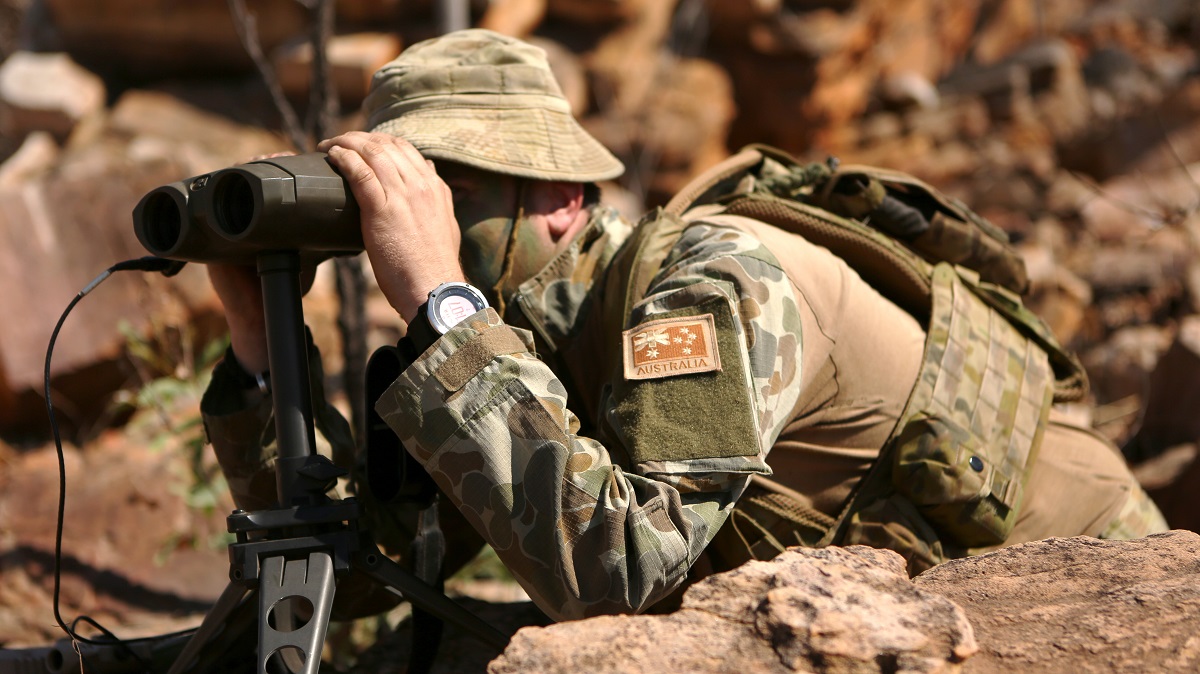
That said, my curiosity was tickled.
While online the other day, I was reading an article about Russia’s war on Ukraine. Its comments included one from what must have been a third-rate moron (actually me), who suggested that a non-North Atlantic Treaty Organization (NATO) third country with the trust and confidence of the West…say, Australia…should commit military forces to defend Ukraine. It was supposed to be a way of funneling more trained and ready manpower and equipment into the fight, while at the same time minimizing the chances of significant Russian retaliation against NATO and Europe. I balked. First of all, it certainly isn’t for some American to suggest that a third country should lay down the lives of their sons and daughters in war or needlessly risk the wrath of a nuclear-armed bully. Secondly, responsible military commentators do not dictate policy to the civilian leadership of any country. That all having been said, my curiosity was tickled.
Let’s continue to use Australia as the example. Given Australia’s strong existing policy of support for Ukraine’s resistance to Russia’s invasion, its sizeable Ukrainian expat community, and its relative geographic isolation from the threat of Russian reprisals, was the idea at least militarily feasible?
Australian land and air forces could be decisive
The introduction of the trained personnel and equipment of the three extant Australian Army brigades as well as the Royal Australian Air Forces could have a decisive effect on the war, given the Ukrainian Army’s losses to date and their challenges in generating trained and ready ground formations, despite the enthusiastic and patriotic volunteers that flocked to their territorial defense units after the commencement of the recent hostilities.
What is more, Australia’s introduction as a belligerent could provide a better off-balance sheet mechanism for introducing trained and ready manpower (or even entire units) and equipment from formally non-belligerent nations. As such, the ranks of the Australian Army could be increased, conceivably many times over, by enthusiastic Americans, Canadians, Brits and others, especially if it became known that no home-country objection existed to these nations’ personnel suddenly feeling an impossible urge to develop a keen sense of mate-ship and fight in Ukraine under the Australian flag. Powerful precedents exist. Lending equipment for the defense of the Australian homeland would also free up other equipment (such as airframes) for use in Ukraine’s fight.
Risks to Australian security and how to minimize them
Australia’s most potent risk mitigation factor is, of course, geography. Australia is far away from an angry and otherwise engaged Russia. A Russia committed to a land war in Europe would have few disposable assets to commit to any force projection halfway around the world. Russia’s ICBM or naval missile threat—while real—is one that might be minimized by restricting Australian belligerent activities to Ukrainian territory (any retaliation by Russia would be much more difficult to justify—and therefore less likely—if the activities of third party belligerents were limited to the undoubtedly legal intervention on Ukrainian soil), as well as by using U.S. and other detection and defeat mechanisms—Patriot, Terminal High Altitude Area Defense (THAAD), and Aegis—however imperfect.
A full mobilization of Australia’s reserves would be required to create appropriate land and air forces to cover down on the security of Australian territory, if the active forces were committed to service in Ukraine. Australia’s naval forces could remain in place. Moreover, this could be combined with an explicit international commitment to the defense of Australia’s territory, by the United States and others. Indeed, by its terms, the Australia, New Zealand, and United States (ANZUS) defense treaty should still operate in the event of commitment of Australian land forces to the defense of Ukraine (“an armed attack on any of the Parties is deemed to include an armed attack on the metropolitan territory of any of the Parties”). Cooperation under AUKUS suggests that further U.S. commitment to Australia’s territorial integrity is on the table. As a practical matter, this would involve a U.S. commitment of its Navy/Marine Corps team for the defense of the Australian mainland, along with assurances that strategic air and space assets would also be made available for the effort, as needed. Placing certain U.S. naval assets under the tactical control of the Australian military command would be an easy way to reassure the Australians that their island would be defended in a satisfactory manner.
Of course, no decision to place innocent lives at risk should be taken lightly.
Creating additional military dilemmas for the Russian leadership
Much like a recent Finnish mayor’s threat to open a NATO base on Russia’s Western border, the tactical goal of Ukraine and her allies should be to create multiple dilemmas for the Russian military leadership, such that her limited fighting power is stretched too thin to prevail. The ability to do this while avoiding any overt involvement from NATO nations is almost too militarily potent to overlook. Of course, no decision to place innocent lives at risk should be taken lightly. That said, there must be a collective mechanism to increase military pressure on Russia. Given the strong extant Australian policies that support Ukrainian victory, and given Australia’s unique position outside Europe (and NATO) but deep within the Western circle of trust, a belligerent Australia just might be the key towards tipping the scales in Ukraine’s favor. Is it crazy? Perhaps. Would making Australia a belligerent in Ukraine’s (undoubtedly legal) war against Russia imperil innocent Australian civilians as well as lead to numerous Australian casualties? No doubt. Is such a plan feasible and militarily useful? It is.
How could this go wrong?
Of course, by taking up this plan Australia would be picking a fight with one of the world’s biggest bullies. That said, in the Ukrainian invasion, Russia showed itself unable to effectively project power along its own borders, in areas it views as historically within its sphere of influence. Given the protection potentially available to Australia from, among others, the U.S. strategic assets outlined above—and given Australians’ unstinting nature—the risk to Australia becomes a manageable one.
The bigger risk might be to Taiwan, insofar as the People’s Republic of China might view any U.S. naval preoccupation with Australian defense as providing an opening to make a play for reunification with its recalcitrant province. The prevailing wisdom is that China views the war in Ukraine as a lesson to be learned, not an opportunity to exploit (Taiwanese officials, for example, have assessed China’s analysis of the war in Ukraine as informing the Chinese plans to invade of the island). That said, the American and Western commitment to supporting Ukraine, as described, at the operational level of war may leave less in reserve for supporting a second conflict, in East Asia. This fact will not be lost on Beijing.
Another risk might be to the cohesion of the NATO alliance, insofar as some of its members on the European Continent have been the most reluctant to provoke Russia (France and Germany, for example, as opposed to Poland and the Baltics, who see the Russian threat as more pressing); the American contribution to the Alliance is, as ever, not just about resources but also about resolve. NATO has provided a powerful mechanism to coordinate support for Ukraine, despite differing appetites among its members on the type of materiel to be provided. Any escalation in the Western level of support for Ukraine can make European partners nervous, despite the clear example the Ukraine invasion provides as to the vulnerability of other European countries to Russian aggression. As Russia’s aggression in Ukraine has continued, however, it appears that a steady and growing realization has come over the Alliance’s members that more and more significant steps are required to provide operational support for the Ukrainian fight. Furthermore, given the existential threat to the rules-based international order that the Russian invasion of Ukraine poses, if Europe and the wider “West” are unwilling to fight to defend the primary construct that has prevented a world war for the last 75 years, then we may have already lost the peace.
At first, Patriot and other advanced systems were off the table, but this position has been gradually reconsidered as a consensus was established for providing greater support. After offering main battle tanks (now approved and on the way) and fighter jets, what is the next step in the West’s collective support for Ukraine, short of direct NATO involvement? Third party land forces.
It’s so crazy it just might work.
Garri Benjamin Hendell is a major in the Pennsylvania Army National Guard. He has three completed overseas deployments to the CENTCOM area of operations, three overseas training missions to Europe, leadership and staff positions at the platoon, company, battalion, brigade, division, and joint force headquarters level, as well as having served both in uniform and as a civilian branch chief at the National Guard Bureau. Among other things, he is a graduate of the Army’s Red Team course.
The views expressed in this article are those of the author and do not necessarily reflect those of the U.S. Army War College, the U.S. Army, or the Department of Defense.
Photo Description: Australian Army Sgt. Michael Krek, a joint terminal attack controller, measures the distance of an artillery impact from target zone at Bradshaw Field Training Area, Northern Territory, Australia August 11, 2016. Krek is working with U.S. Marines during Exercise Koolendong 16, a trilateral exercise between the Australian Defence Force, U.S. Marine Corps and French Armed Forces New Caledonia.
Photo Credit: U.S. Marine Corps photo by Sgt. Sarah Anderson




